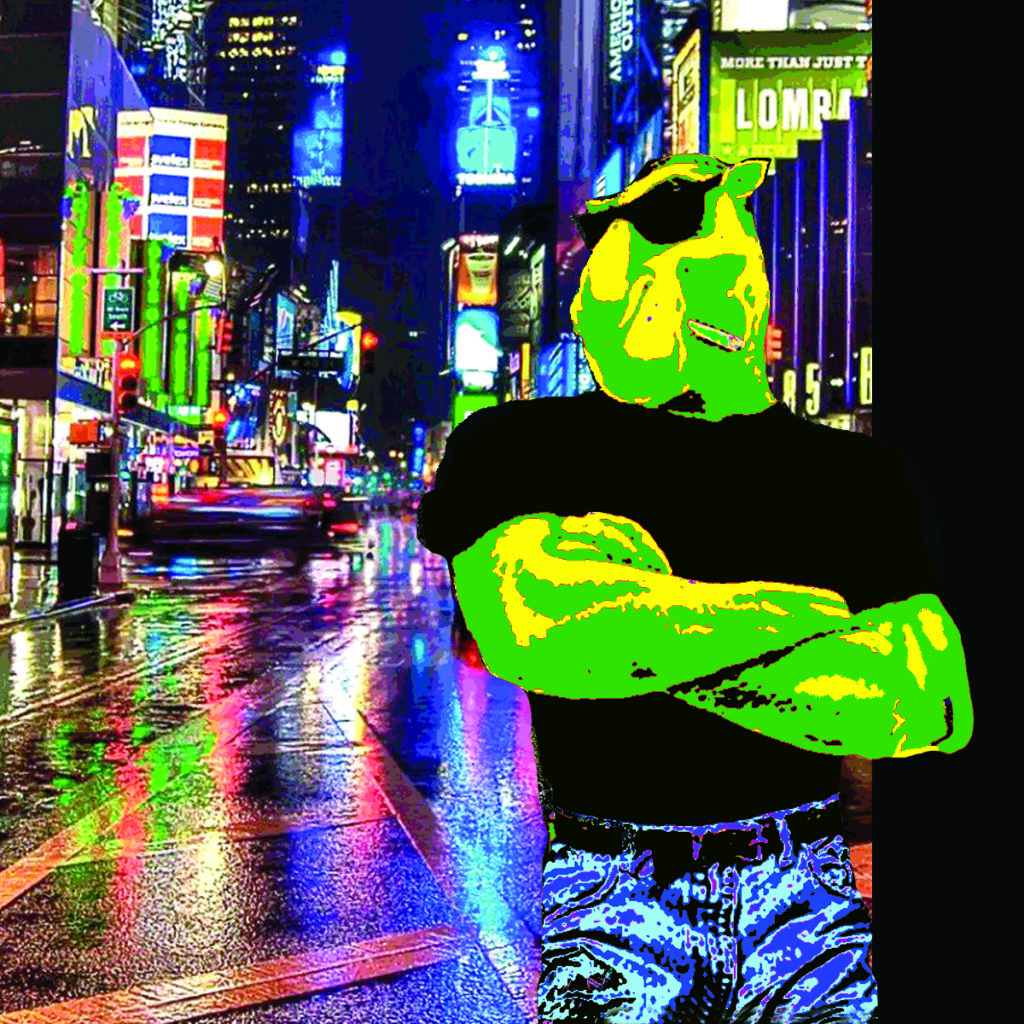NFT Non-fungible token
JOE CAMEL

A non-fungible token (NFT) is a non-interchangeable unit of data stored on a blockchain, a form of digital ledger, that can be sold and traded. Types of NFT data units may be associated with digital files such as photos, videos, and audio. Because each token is uniquely identifiable, NFTs differ from blockchain cryptocurrencies, such as Bitcoin.
NFT ledgers claim to provide a public certificate of authenticity or proof of ownership, but the legal rights conveyed by an NFT can be uncertain. NFTs do not restrict the sharing or copying of the underlying digital files, do not necessarily convey the copyright of the digital files, and do not prevent the creation of NFTs with identical associated files.
NFTs have been used as a speculative asset, and they have drawn increasing criticism for the energy cost and carbon footprint associated with validating blockchain transactions as well as their frequent use in art scams and claimed structure of the NFT market to be a Ponzi scheme.
wikipedia.org

What are some examples of non-fungible tokens?
Non-fungible tokens can digitally represent any asset, including online-only assets like digital artwork and real assets such as real estate. Other examples of the assets that NFTs can represent include in-game items like avatars, digital and non-digital collectibles, domain names, and event tickets.

How does non-fungible tokens work?
Essentially, NFTs are like physical collector’s items, only digital. So instead of getting an actual oil painting to hang on the wall, the buyer gets a digital file instead. They also get exclusive ownership rights. That’s right: NFTs can have only one owner at a time.

How do I buy NFT tokens?
How to buy The NFT Token
- Download Coinbase Wallet. …
- Choose a Coinbase Wallet username. …
- Securely store your recovery phrase. …
- Understand and plan for Ethereum network fees. …
- Buy and transfer ETH to Coinbase Wallet. …
- Use your ETH to buy The NFT Token in the trade tab.

Is bitcoin an NFT?
For example, Bitcoin is not an NFT. But a one-of-a-kind piece of art is non-fungible. You cannot replace it. If you trade it with another piece of art you will have something completely different.

What is an example of something fungible?
Commodities, common shares, options, and dollar bills are examples of fungible goods. Assets like diamonds, land, or baseball cards are not fungible because each unit has unique qualities that add or subtract value.

Where can I sell NFT art?
11 NFT marketplaces you should know to sell your NFT ART
- OpenSea. The broadest and most established NFT marketplace. …
- Nifty Gateway. The NFT marketplace with big drops. …
- Rarible. The NFT marketplace for rare media and sports collections. …
- Binance NFT. One of the largest and future-proof NFT marketplaces. …
- SuperRare. offers a traditonal gallery approach to NFTs. The NFT platform with an art gallery feel
- Async Art. This NFT marketplace is a leader in programmable art. Async Art NFT market where you’ll find programmable art
- MakersPlace. An NFT marketplace hosting established fine and modern artists.
- KnownOrigin. This NFT platform supports limited-run drops and high-quality art. KnownOrigin is one of the most established NFT marketplaces
- Foundation. An artist-run NFT marketplace with rare and exclusive projects. Foundation is a very select, artist-led NFT marketplace.
- Zora. An NFT marketplace that supports artists and creators of all kinds. Zora enables creators to sell NFTs of physical items, such as RAC’s album Boy.
- Mintable. A newcomer that makes creating and selling NFTs very easy. Create an NFT from almost any digital file on Mintable.
The best NFT marketplaces: frequently asked questions
There’s a lot of jargon involved in the world of NFT marketplaces, and some controversy around NFTs themselves. Many NFT marketplaces are trying to make their platforms easier to use, and some even now take debit and credit cards as well as crypto wallets, so creating, selling and buying NFTs is becoming easier. Below are the answers to some common questions many newcomers to the NFT scene still have.
What are gas fees?
This is the charge you need to pay on the Ethereum blockchain to perform a function, which includes the case of creating (minting) an NFT. Gas fees are measured in gwei, and they can go up and down depending on how heavy the use of the blockchain is. On average you’ll be charged 0.0042 ETH per transaction. You can find lower fees early in the morning, between 1am and 3 am (UTC) or late at night, between 9pm and 11 pm (UTC).
Can I avoid gas fees?
Yes, some NFT marketplaces are offering gas-free minting. These including OpenSea and Rarible. This approach essentially places the gas fee on the buyer not the creator, so it will show in the sale (a little like VAT, or the fuel tax added by some airlines). There are some blockchains that have no gas fees or at least lower fees. These include Polygon on Opensea, or ImmutableX on Mintable. Before minting or buying an NFT, look into the fees and at which blockchain and token are being used.
What is minting?
Like with physical currency, “minting” is the term used for the process of creating a currency and NFTs on a blockchain. With NFTs it’s usually on Ethereum. The process of minting records data in a public ledger that is unchangeable and tamper-proof, and which can follow and track the NFT as future sales are made. Minting usually has a cost – the gas fee that we mentioned above. But as we said, some marketplaces are becoming creative about how, when and to whom the fees are charged.
What’s a blockchain?
Investopedia describes a blockchain as: “a distributed database that is shared among the nodes of a computer network.” The strength of blockchain tech is that it guarantees security and trust without the need for a third-party, speeding up data transactions. The data entered is irreversible, ensuring it’s permanent. For NFTs, it means the artist can trace their NFT and ensure a percentage on future sales.
Do I need a crypto wallet?
In most cases, yes. In most cases, you will need to pay in cryptocurrency to mint an NFT, or to buy an NFT. As a result, most NFT marketplaces require you to create a crypto wallet to mint and trade NFTs. A common one is MetaMask, though Coinbase is another secure wallet. Some newer NFT marketplaces, such as Nifty Gateway, have started allowing the use of Fiat currency payments (US dollars, etc) via credit and debit cards, making access to NFTs easier.
Can anything be an NFT?
Yes. Any kind of digital file can be stored as an NFT. Most marketplaces are set up for digital artwork, but more are now supporting video, game assets, and music. Physical items are also now digitised as NFTs, for example physical limited edition Nike trainers. Expect NFTs to exist on and between the digital and physical spaces in the future.
Are NFTs controversial?
Yes. You can’t escape the fact Ethereum minting has a high carbon footprint, but perhaps not as high as some believe. Yet everyone accepts there is a problem. Ethererum 2.0 should solve this issue, and is due this year.
Are there any energy-efficient blockchains?
Yes, and NFT marketplaces are now offering alternatives to energy-hungry Ethererum with better carbon footprints. These include Flow, Tezos, and Polygon. New blockchain Solana boasts of being carbon-neutral. Check on your NFT marketplace which is being used and opt for one that suits your conscience.
Source: Creativebloq.com
What is the difference between cryptocurrency and NFT?
The term cryptocurrency is used for “virtual currency,” “tokens” and “digital assets.”) One NFT cannot be exchanged for another, and an NFT’s value, if any, is based solely on what someone is willing to pay the seller to buy it.
What is the meaning of fungible token?
A. F. A representation of an asset on a blockchain that is interchangeable. Cryptocurrencies are the prime example of fungible tokens because each coin has the same value as any other coin of the same type at any given moment.
What is meant by non-fungible?
A unique digital identifier that cannot be copied, substituted, or subdivided, that is recorded in a blockchain, and that is used to certify authenticity and ownership (as of a specific digital asset and specific rights relating to it)














